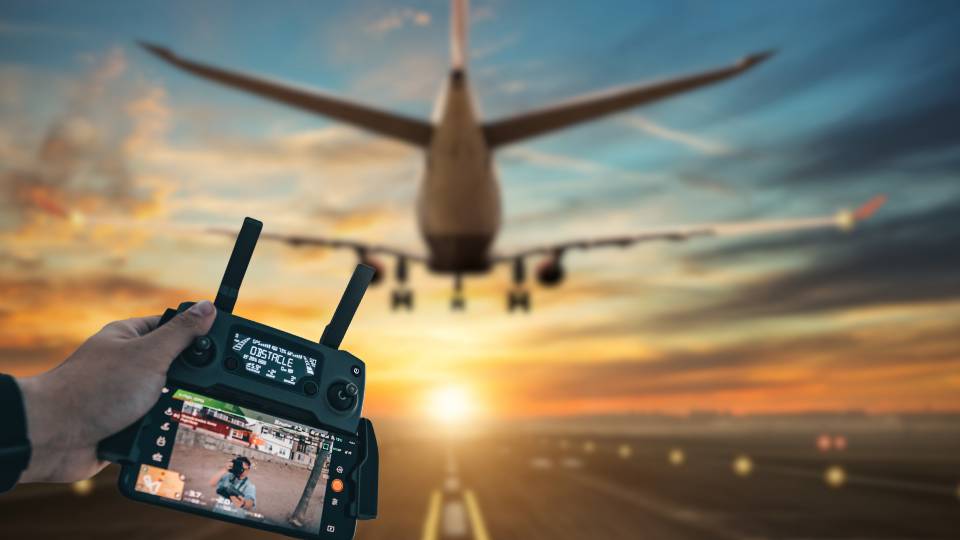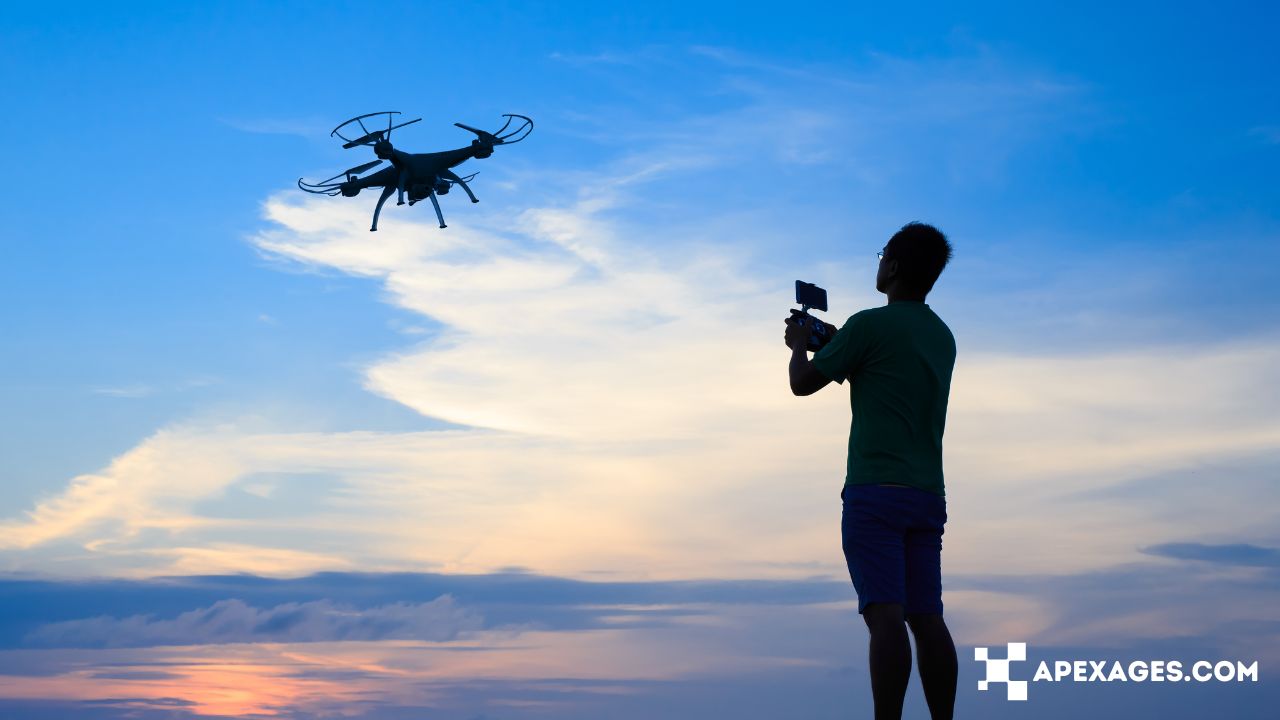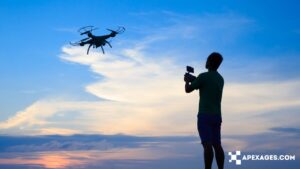The aviation business is undergoing a major transition as technology evolves. Unmanned aerial vehicles, or drones, have swiftly grown from toys to sophisticated systems with the potential to reshape the role of pilots. This article investigates the intriguing and contentious question of whether drones will someday replace pilots in different aviation activities.
The Rise of Drones
The concept of unmanned flight dates back to the early 20th century, but recent years have seen an unprecedented surge in drone adoption. Drones are no longer limited to military applications; they are employed in agriculture, logistics, filmmaking, and surveillance industries. These versatile machines offer exceptional maneuverability, accessibility, and cost-efficiency.
Advantages of Drone Technology
Drones come with an array of benefits, including increased safety, reduced operational costs, and enhanced data collection. They can access hazardous environments, gather real-time information, and perform tasks that are perilous for humans. Drones equipped with advanced sensors and cameras can monitor crops, inspect infrastructure, and aid in disaster response.
The Evolution of Pilotless Systems
The development of autonomous technologies has paved the way for pilotless aircraft. LSI Keyword: Autonomous systems enable drones to navigate complex terrains, avoid obstacles, and make intelligent decisions. These systems rely on artificial intelligence and machine learning algorithms to interpret data and adjust flight paths, mimicking human decision-making processes.
Automation in Aviation

Automation has been a cornerstone of aviation for decades. Aircraft already use autopilot systems to manage routine tasks during flight. LSI Keyword: However, the prospect of full autonomy raises questions about the balance between human oversight and machine control. Striking the right equilibrium is crucial to ensure safety and efficiency.
Challenges and Concerns
The integration of drones into airspace presents challenges. LSI Keyword: Regulatory frameworks must adapt to accommodate pilotless aircraft, addressing issues like air traffic management, collision avoidance, and cybersecurity. Additionally, public perception and concerns about job displacement require careful consideration.
Drones vs. Pilots: Skill Comparison
LSI Keyword: Comparing drones and pilots involves evaluating their respective strengths. While drones excel in repetitive tasks, data analysis, and operating in harsh conditions, pilots possess human intuition, adaptability, and decision-making abilities. Collaborative models that combine human expertise with automation are emerging as potential solutions.
The Future of Aerial Systems
The future of aviation is likely to be shaped by the integration of drones and pilotless aircraft. LSI Keyword: Urban air mobility, cargo delivery, and surveillance could witness a significant transformation. As technology matures and public acceptance grows, we may witness a gradual transition towards automated flight systems.
Ethical and Legal Implications
The rise of drones raises ethical concerns. LSI Keyword: Issues such as privacy infringement, data security, and the potential for misuse demand robust legal frameworks. It is critical to strike a balance between technology innovation and the protection of individual rights.
Addressing Security Concerns
.jpg)
LSI Keyword: The proliferation of drones also raises security challenges. Unauthorized drone flights could pose threats to critical infrastructure, public events, and even national security. Developing countermeasures to detect, track, and mitigate rogue drone activities is paramount.
Industries Impacted by Drones
The influence of drones extends across various sectors. LSI Keyword: Agriculture benefits from precision crop monitoring, healthcare from medical supply deliveries, and entertainment from breathtaking aerial shots. Drones also aid search and rescue operations, environmental monitoring, and infrastructure inspection.
Training and Development
LSI Keyword: As technology evolves, training methodologies must adapt. Pilots and operators need to acquire skills in remote piloting, data analysis, and troubleshooting. Effective training programs are essential to harness the full potential of drone technology safely and efficiently.
Human-Machine Collaboration
LSI Keyword: The concept of human-machine collaboration gains prominence. Pilots may transition into supervisors, overseeing multiple drones simultaneously. This shift requires a new skill set, focusing on managing and optimizing automated systems rather than direct manual control.
Cognitive Automation
Cognitive automation involves imbuing drones with the ability to learn and make decisions based on patterns and data. This allows drones to adapt to changing conditions and unforeseen challenges, making them more versatile and dependable in dynamic environments.
Redefining Aerial Missions
The capabilities of drones enable innovative missions. From delivering medical supplies to remote areas to assisting in disaster response, drones redefine what is achievable in aerial operations. Their agility, speed, and accessibility open doors to new possibilities.
The Road Ahead
The journey toward fully autonomous flight is characterized by a blend of optimism and caution. Technological advancements will continue to push boundaries, but collaboration between aviation experts, regulators, and technology developers is essential to ensure a safe and efficient transition.
FAQs
Will drones completely replace pilots?
While full replacement is unlikely, drones will play an increasingly prominent role in various aviation operations, potentially changing the nature of pilot responsibilities.
What industries benefit the most from drone integration?
Industries such as agriculture, logistics, filmmaking, and surveillance experience significant benefits from drone technology.
Are there ethical concerns regarding drones?
Yes, ethical concerns include privacy infringement, data security, and the potential misuse of drones for malicious purposes.
How do drones navigate complex environments?
Drones use autonomous systems fueled by artificial intelligence and machine learning to navigate and make decisions in intricate surroundings.
What challenges does drone integration pose?
Challenges include airspace management, collision avoidance, cybersecurity, public acceptance, and regulatory adjustments.
Can drones work collaboratively with human operators?
Yes, the future likely involves human-machine collaboration, where pilots supervise and manage multiple drones simultaneously.
What skills are essential for future drone operators?
Future operators need skills in remote piloting, data analysis, troubleshooting, and managing automated systems.
Do drones have security implications?
Yes, unauthorized drone flights can pose security threats to critical infrastructure, public events, and national security.
How do drones redefine aerial missions?
Drones enable medical supply deliveries, disaster response, environmental monitoring, and infrastructure inspection.
What is cognitive automation in drones?
Cognitive automation empowers drones to learn from data, adapt to changing conditions, and make informed decisions.
Conclusion
The evolution of drone technology is reshaping the aviation landscape. While the complete replacement of pilots remains uncertain, the integration of drones and pilotless systems offers unprecedented opportunities for efficiency, safety, and innovation. Striking the right balance between human expertise and machine automation will be pivotal in realizing the full potential of this transformative technology.






